
Everything You Need to Know About Planting Zones
Do you ever wonder why some folks have a green thumb while others can’t get anything going in their gardens? Why is it that certain neighbors can produce magnificent vegetation while some can’t even keep a cactus alive?
If you’re interested in making the most of your beds, it’s not only about knowing how to care for your plants. Those with a natural talent for growing understand the key role their climate plays in planting and maintaining luscious rows of colorful shrubs and flowers.
If you’ve only been guessing about your climate until this point, it’s time to get the inside scoop on planting zones. Our guide will teach you what planting zones mean, the differences between them, and how to use your zone information to grow a thriving garden that makes it through the winter. You’ll have your neighbors asking for your green-thumb secrets before you know it.
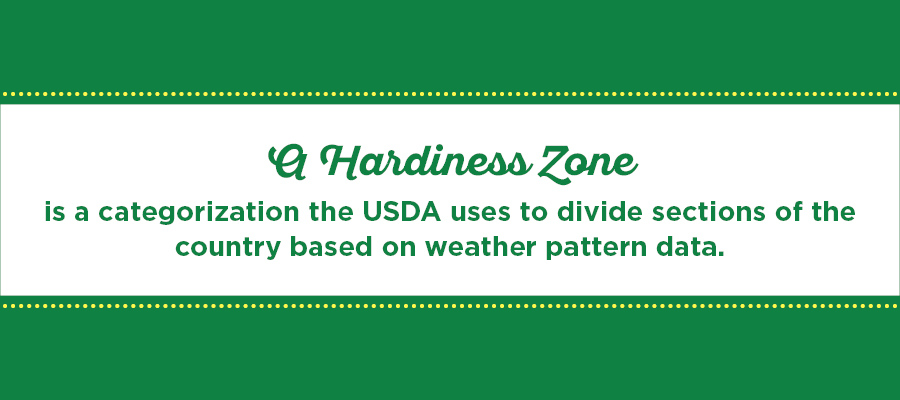
What Is a Planting Zone?
A planting zone — or hardiness zone — is a categorization the USDA uses to divide sections of the country based on weather pattern data. Recently, the USDA updated its Plant Hardiness Zone Map from 11 official planting zones to 13. Each is separated by a 10-degree Fahrenheit range. Gardeners across the nation use the USDA Plant Hardiness Zones to select plants based on their ability to survive.
Planting zones set the guidelines to help gardeners understand the conditions of where their gardens grow. Each plant type has its own designated hardiness zone, indicating that the plant is tolerant of the lowest temperatures in that area. Planting outside the zone may result in your plant being shocked by heat or cold. Therefore, understanding categorization can help you select and care for the best permanent landscaping trees, shrubs, and perennials for your location.
Keep in mind that as climate conditions change, zones might change as well. Additionally, with new and advanced GIS technology, the USDA can improve its zone classification by zeroing in on the finer points. This further helps gardeners find the best plants for their exact location.
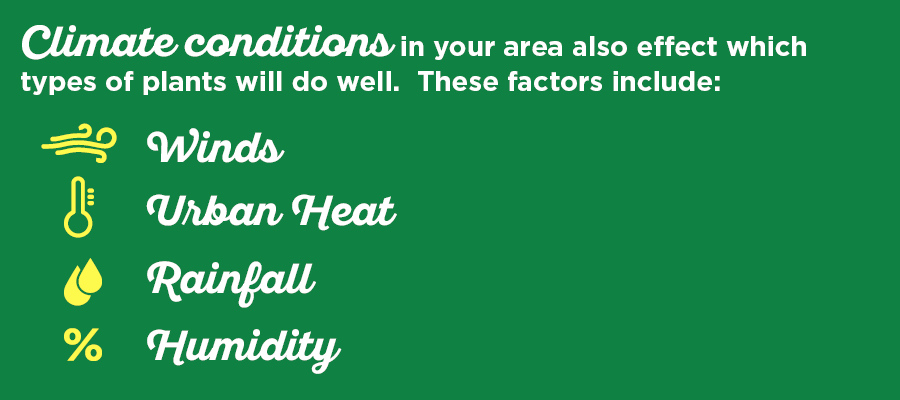
Difference Between Planting Zones
Separated by 10-degree differences, hardiness zones run from the lowest to the highest possible cold conditions. Vegetation with the lowest numbers can withstand the chilliest weather, while higher numbers mean warmer climates are a better match. If a plant belongs to hardiness zones three to seven, this means it's hardy enough to survive some cold, but not sufficient to endure extreme and prolonged icy periods. On the other hand, a three-to-seven zone plant needs a certain amount of cold and will likely perish in the desert heat.
If you've ever bought plants online or at a nursery, you'll likely notice they’re tagged by hardiness zones. Zone numbers are further subdivided into “a” and “b.” Plants marked as “a” have average winter tolerance temperatures five degrees cooler than their zone “b” counterparts.
You might assume that the farther north an area is, the colder its average temperature will be, but that’s not always true. Seattle, for example, is at a latitude of 47 and a hardiness zone of eight, while Baltimore is farther south and boasts a zone of six or seven.
Besides the cold-tolerance level of plants, there are other local factors to account for when learning about your hardiness zone. Unique climate conditions in your area also affect which types of plants will do well. These factors include:
- Winds: Weather factors like winds from jet streams and coastal air movement can change growing conditions in specific areas. Winds dry out vegetation. Additionally, high winds can damage plants. If you reside in a windy microclimate, be sure to select stronger, low-lying shrubs or evergreens.
- Urban Heat: Metropolitan areas are generally warmer than rural areas, even if they belong to the same region. That’s because of the urban heat island effect — urban environments absorb and trap heat in their concrete jungles, maintaining higher year-round temperatures.
- Rainfall: The greater the rainfall, the more moist the soil. That’s why it’s essential to consider how much precipitation your area sees. Residents of the Pacific Northwest need to choose wet-tolerant plants or improve their soil drainage, whereas gardeners in drier regions won’t be concerned about rainfall.
- Humidity: Although California and Florida have parts of their respective states with the same hardiness zones, their relative humidity levels are vastly different. High humidity slows down a plant’s transpiration rate, so Floridian gardeners need to consider the humidity tolerance of their plant selection.
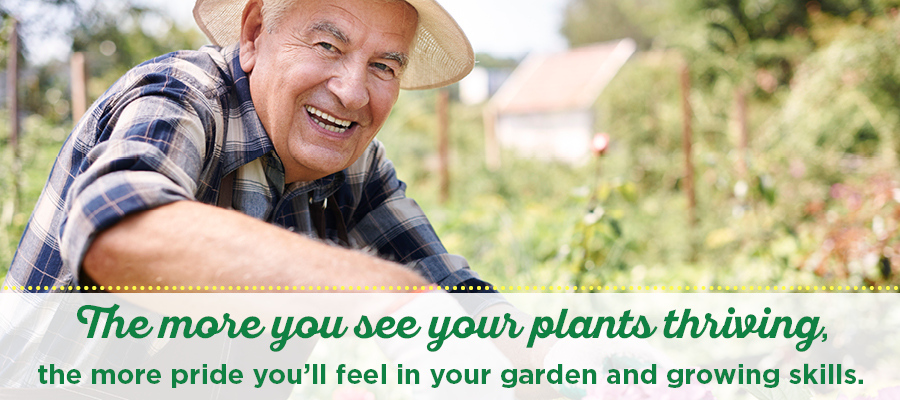
5 Reasons to Know Your Planting Zone
As a gardener, you know plants depend on various conditions to thrive, including soil quality, nutrients, water, and sunlight levels. But weather conditions are just as crucial for many reasons.
Here are the top reasons why gardeners should get to know their planting zones:
- Know What You’re Buying: Just like a shoe store labels all shoes by size, nurseries label their plants by hardiness. So when you buy vegetation online or in a local nursery, looking for plants of the correct size makes more sense than blindly selecting sprouts and hoping they'll survive. When you know your hardiness zone, you know exactly what to look for when stocking up on plants.
- Invest Your Money Wisely: Let's face it — plants are an investment. Some trees and shrubs can be quite pricey, but if you nurture them correctly, they’ll last a lifetime. Just like any other financial asset, you also want to protect your plants. By choosing the plants that fit your hardiness zone, you're preventing yourself from investing in new landscaping later.
- Provide Better Care for Your Plants: Your plants deserve the best shot at survival. As a plant parent, you want to make your environment as nurturing as possible for your leafy friends. By choosing the plants that are best suited for your climate conditions, you can make caring for your plants a lot easier. The more you see your plants thriving, the more pride you’ll feel in your garden and growing skills.
- Grow Versatile Plants: As you continue to learn more about plant species and their hardiness levels, you’ll learn that some types of plants are hardier than others. Many plants are versatile enough that they grow in a variety of planting zones. If you’ve heard that other gardeners have grown successfully outside of their traditional zone, then you may be inspired to give it a try. But first, you must have a good understanding of the specific conditions to prepare for.
- Add Diversity to Your Garden: Once you know your hardiness zone and understand your local weather, you may be inspired to branch out. Once you know what you’re working with, you may come across some species you'd never considered before, giving you an opportunity to be creative with your plantings while still ensuring you're choosing suitable plants.
13 USDA Planting Zones
Today’s USDA planting zone map is interactive and searchable to help gardeners like you find the information you need. You can refine the nation by location to find your specific zone and start planting the right seeds.
If you were familiar with your area’s hardiness zone in the past, be advised that it may have changed. In 2012, the USDA redeveloped its hardiness zone map to reflect changing climates throughout the nation. Here are the 13 current planting zones and their specifics:
- Zone 1 (-60℉ to -50℉): The coldest hardiness zone in America, planting zone 1 has an average low temperature of -60 degrees Fahrenheit. Zone 1a is -65 to -55 degrees, and zone 1b is -55 to -50. You’ll only find this number in northern and central Alaska. What can grow in this unforgiving cold? Picture beautiful rows of birch trees and aspens growing through a blanket of snow. Certain hardy rhododendrons also manage to make a go of it in hardiness zone one.
- Zone 2 (-50℉ to -40℉): Zone 2 also hosts a bitterly cold growing environment. Again, the only parts of America that fall into this zone are northern and central points in Alaska. Certain coastal Alaskan areas also hold a hardiness zone of 2b, which is an average low of -45 to -40 degrees. Paper birches, American elms, and Eastern larch trees are hardy candidates for zone 2’s stinging winters.
-
Zone 3 (-40℉ to -30℉): States that border Canada are familiar with zone 3 conditions. These include areas in northern Montana, North Dakota, Minnesota, and Wisconsin. Parts of upstate New York, Vermont, New Hampshire, and Maine also dip to 3b conditions, which are between -30 and -35. Trees like sugar maples and European white birches, as well as particular species of dogwood, juniper, spruce, and pine, can all tolerate these frigid temperatures.
![japanese maples and flowering dogwoods thrive in one 5]()
- Zone 4 (-30℉ to -20℉): Further south, states like Idaho, Wyoming, and South Dakota have sections with zone 4 temperatures. Michigan, Wisconsin and Minnesota also range between zones 4a and 4b. Suitable plants include forsythias, Japanese barberry, and common privet. Deciduous dawn redwoods also thrive in zone 4.
- Zone 5 (-20℉ to -10℉): Colorado, Nebraska, and Iowa are primary zone 5 representatives. Northern Illinois, Indiana, New York, Massachusetts, and Northern Pennsylvania also experience zone 5b conditions. If you’re gardening in these parts of the country, opt for winners like Japanese maples, flowering dogwoods, and Oregon-grape.
- Zone 6 (-10℉ to 0℉): Zone 6 belts across the eastern border of Colorado and New Mexico, through Kansas, Missouri, Illinois, Kentucky, Ohio, West Virginia, southern Pennsylvania, Maryland, Delaware, New Jersey, and Connecticut. You’ll also find zone 6 in inland Washington and Oregon, as well as throughout Nevada, Utah, and parts of California and Arizona. Common boxwoods, Atlas cedars, English Ivy, and heavenly bamboo are excellent plants for zone 6.
- Zone 7 (0℉ to 10℉): Zone 7 plants prosper in Arizona, New Mexico, and Northern Texas, as well as Oklahoma, Arkansas, Tennessee, and North Carolina. Big leaf maples, English holly, and Monterey pines are good fits for zone 7. You can also try Kurume azaleas, which produce beautiful blooms.
- Zone 8 (10℉ to 20℉): Coastal regions of Washington State, Oregon and Northern California are home to zone 8 hardiness conditions. This zone also spans central Texas, Mississippi, Alabama, Georgia and South and North Carolina. Planting contenders include the Mexican orange, the common olive and the strawberry tree. Zone 8b can also produce healthy pindo palms.
- Zone 9 (20℉ to 30℉): California, Arizona, East Texas, Louisiana, and Florida all have zone 9 weather conditions. Even southwestern Oregon can produce healthy zone 9 plants. Chinese hibiscus plants, orchid trees, fuchsias, and eucalyptus species thrive in these areas.
- Zone 10 (30℉ to 40℉): Zone 10 maintains a higher average year-round temperature, which includes areas like Central Florida, Arizona’s Mexico border and the southern tip of California. Try your hand here with friendly poinsettias, rubber plants and variety of palms and succulents.
- Zone 11 (40℉ to 50℉): Los Angeles, San Diego, and Miami are virtually the only areas of the continental United States that reach zone 11 conditions. Zone 11 residents can have fun with agaves, aloes, and African lily plants. Just remember to select plants that are right for your local humidity level.
- Zones 12 and 13 (50℉ to 60℉ and 60℉ to 70℉): USDA tropical zones 12 and 13 exist only on the Hawaiian Islands and Puerto Rico. Zone 13 plants include the exotic birds of paradise and Hawaiian hibiscus. Tropical fruit plants like mangos, avocados, and coconut palms are also right at home here.

How to Find Out Your Planting Zone
Knowing the different plant hardiness zones is essential to the health of your gardening venture. It’s also interesting to learn how our nation’s vast range of climatic conditions can produce such a wide diversity of vegetation. That’s why you should learn your zone by visiting the USDA’s Agricultural Research Service Website to view the most up-to-date version of the planting zone map. Here’s how:
- Click on your state: The map itself is interactive, meaning you can hover over each state and click on the one you’d like to select. This will bring up your state’s individual page, a close-up that shows your hardiness location in color-coded detail.
- Select your state from the drop-down menu: You can also view your state map by selecting it from an alphabetical list provided. This will bring you to the same page as option one.
- Input your zip code: Finally, you can also search planting zones by zip code. Using the same map, enter your zip code in the search field. Once you click "Find," your planting zone will display below the search bar. For example, we entered our nursery location's zip code in the search. The map tells us we're in planting zone 7a, which is zero to five degrees. Using your zip code can give you a more accurate result than eyeballing your location on your state's map.
Viewing your state’s map shows you just how much diversity one state can have when it comes to climate. You might notice that even a neighboring city falls within a half zone higher or lower than yours. This separation is all part of the phenomenal influence that climate, weather, and nature have on our vegetation.
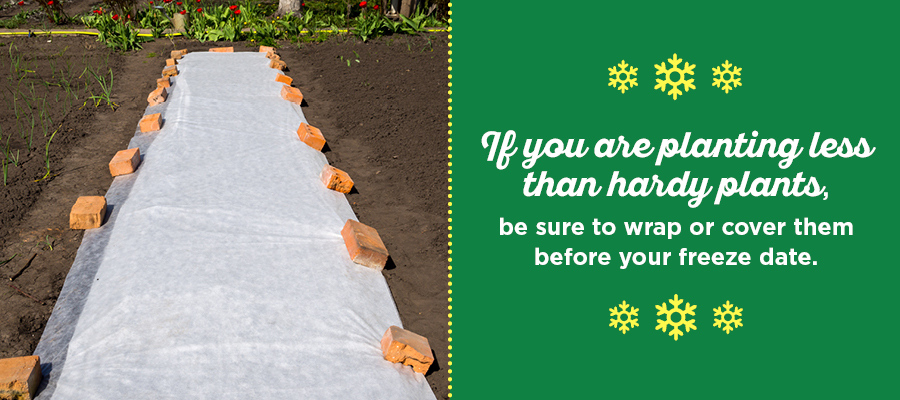
What to Know About Your Planting Zone
Using the USDA interactive planting zone map, you’ve now pinpointed your number. Here are a few more things to know when researching your zone:
- Your Zone Based on Zip Code: After you input your zip code, it’s important to note whether your area is in the “a” or “b” zone. Even a five-degree difference can have an impact, so try to be as exact as possible. You might also want to look at the previous USDA Hardiness Zone Map before its 2012 update to get an understanding of how the climate in your location has changed over the past 20 years.
- Planting Outside Your Zone: Hardiness zones are guidelines, and you should treat them as such. You can still plant vegetation that falls outside of your hardiness zone as long as you're prepared to take certain precautions. If you're planting less hardy plants, be sure to wrap or cover them before your freeze date. You’ll also want to lay down an ample layer of mulch for additional freeze protection.
- Plants That Are Suitable for Your Zone: Keep in mind that although hardiness zoning isn't a perfect solution, it's an excellent tool to help you choose your plants wisely. Gardeners use planting zones to identify which plants will become part of their permanent landscape. For example, zones might help them designate shrubs and perennials for garden beds, plants for hedges and privacy screens and trees for your yard.
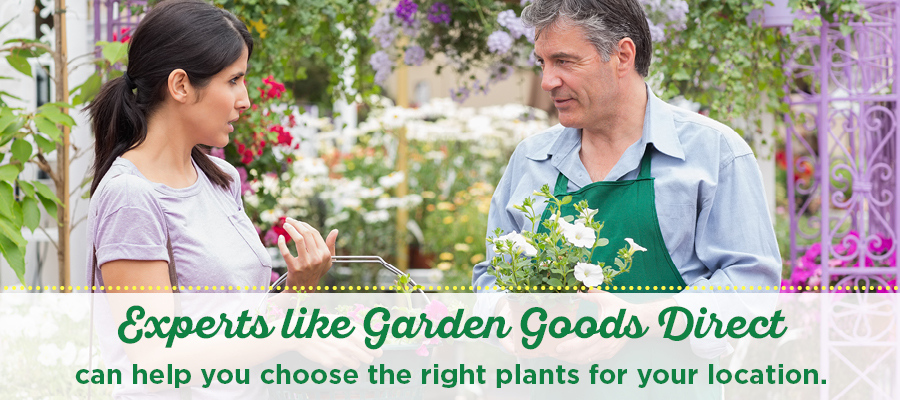
Selecting Plants for Your Planting Zone
With a deeper understanding of planting zones, you can know why some gardening attempts fail. Knowing your climate and weather factors is vital to maintaining healthy plant life year-round. Because trees, shrubs and perennials should be a worthwhile investment, keeping your zone in mind before you buy is a great way to save money from the start.
There are always ways to break the rules and still produce healthy plants that aren't necessarily perfect for your planting zone. It's just a matter of having the right knowledge and catering to the extra needs of your more sensitive plants.
Experts like Garden Goods Direct can help you choose the right perennials, shrubs, and trees for your location. We’re your leading online garden supplier with a local garden center in Bowie, Maryland. Shop our supply and purchase plants for your hardiness zone online. Contact Garden Goods Direct today to speak to a gardening expert about your planting zone needs.

